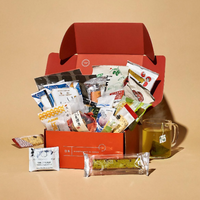The Traditional Japanese Diet: How Japan Eats Its Way to Longevity
In recent years, the traditional Japanese diet has become widely recognized as one of the healthiest ways to eat in the world. With Japan having one of the longest life expectancies and the lowest obesity rates globally, it’s no surprise that people are increasingly turning to this way of eating to improve their health and overall well-being.
But what exactly makes the Japanese diet so unique—and so effective?
The Simplicity and Balance of Japanese Eating

At its core, the Japanese diet is built on balance. It’s not about strict rules or eliminating entire food groups. Instead, it’s about choosing foods that are fresh, seasonal, and nourishing. Meals are typically made up of small portions of different dishes, allowing a wide variety of nutrients to be consumed without overeating. This way of eating naturally encourages portion control and a more mindful approach to food.
One of the standout features of this diet is the minimal use of processed foods. Instead of packaged snacks or frozen dinners, traditional Japanese meals are made from scratch using ingredients like rice, vegetables, seafood, fermented foods, and green tea. These whole foods are nutrient-rich and full of health-boosting properties.
Rice: The Foundation of Most Meals

Rice is perhaps the most essential part of a traditional Japanese meal. Served in almost every home-cooked dish, it acts as a base to many meals and helps create a sense of satiety without the need for heavy or greasy foods. Japanese rice, known as uruchimai, is a sticky, short-grain rice that pairs beautifully with everything from grilled fish to pickled vegetables. It’s not just a filler—it’s a comforting, clean source of energy that supports a balanced diet.
Soy-Based Foods: A Versatile Superfood

Another cornerstone of Japanese cuisine is soy. In various forms, soybeans appear throughout the day—from breakfast all the way to dinner. Tofu, a soft block made from soybean curds, is often served in soups or grilled and topped with scallions and soy sauce. Miso, a fermented soybean paste, is used to make a flavorful broth that's typically consumed as a starter in almost every meal. Then there’s natto, a sticky, fermented soybean dish known for its strong flavor and even stronger health benefits. Natto is especially praised for its probiotic content, which promotes gut health and may help reduce the risk of heart disease.
Vegetables from Land and Sea

Vegetables, both from the land and the sea, appear in every meal and in many different forms—steamed, boiled, pickled, or stir-fried. Japanese meals include vegetables such as daikon (a type of radish), carrots, spinach, eggplant, and burdock root. These are often served in small side dishes to add both color and nutrition to the plate.
Seaweed is also a staple in many meals. Varieties like nori, wakame, and kombu are used in soups, salads, rice balls, or even eaten as snacks. These sea vegetables are low in calories but high in minerals like iodine, magnesium, and calcium, contributing to everything from bone health to proper thyroid function.
Green Tea: More Than Just a Beverage

Green tea, especially matcha, is more than just a drink in Japan—it’s a ritual. Consumed daily, often multiple times a day, green tea is celebrated for its high antioxidant content. These antioxidants can help reduce the risk of chronic diseases, support mental alertness, and even improve metabolism. The calm, focused energy that comes from matcha makes it a favorite choice for both wellness and productivity.
Fish and Seafood: Lean, Protein-Packed, and Heart-Healthy

Seafood plays a central role in the Japanese diet, often replacing red meat as the main source of protein. Whether it’s a raw slice of tuna in sushi, a piece of grilled mackerel, or a simmered fish dish with soy sauce and ginger, seafood is eaten regularly. These dishes are not only high in protein but also rich in omega-3 fatty acids, which are known to support heart health, reduce inflammation, and improve brain function.
Fermented Foods and Gut Health

Fermentation is a time-honored technique in Japanese cuisine, and it's one of the reasons why this diet is so beneficial for digestion. Foods like miso, natto, and pickled vegetables (tsukemono) are naturally fermented, helping to promote a healthy gut microbiome. This not only improves digestion but also plays a role in immunity and inflammation control.
Why the Japanese Diet Leads to Better Health

The benefits of this way of eating are more than just anecdotal. Research shows that people who follow a traditional Japanese diet tend to live longer and suffer from fewer chronic diseases. The emphasis on whole foods, fiber-rich vegetables, lean proteins, and fermented ingredients supports everything from heart health to digestion and weight management.
Another factor is how the food is eaten. Meals in Japan are often shared with others, eaten slowly, and appreciated with all the senses. There's also a cultural philosophy called hara hachi bu, which means eating until you’re about 80% full. This mindset helps people avoid overeating and supports better portion control naturally.
Experience the Flavors of Japan at Home

If you want to explore authentic Japanese snacks and treats, consider trying a Japanese subscription snack box like Bokksu. These boxes bring the tastes of Japan right to your door, including regional specialties, green tea, and rice-based snacks. It’s a fun and delicious way to get familiar with Japanese flavors while supporting small Japanese makers.
You can also find miso soup packets, seaweed snacks, and rice crackers in international grocery stores or online. These are easy, flavorful additions to your pantry and a great starting point if you’re looking to ease into a healthier, Japanese-inspired lifestyle.
Author Bio

































